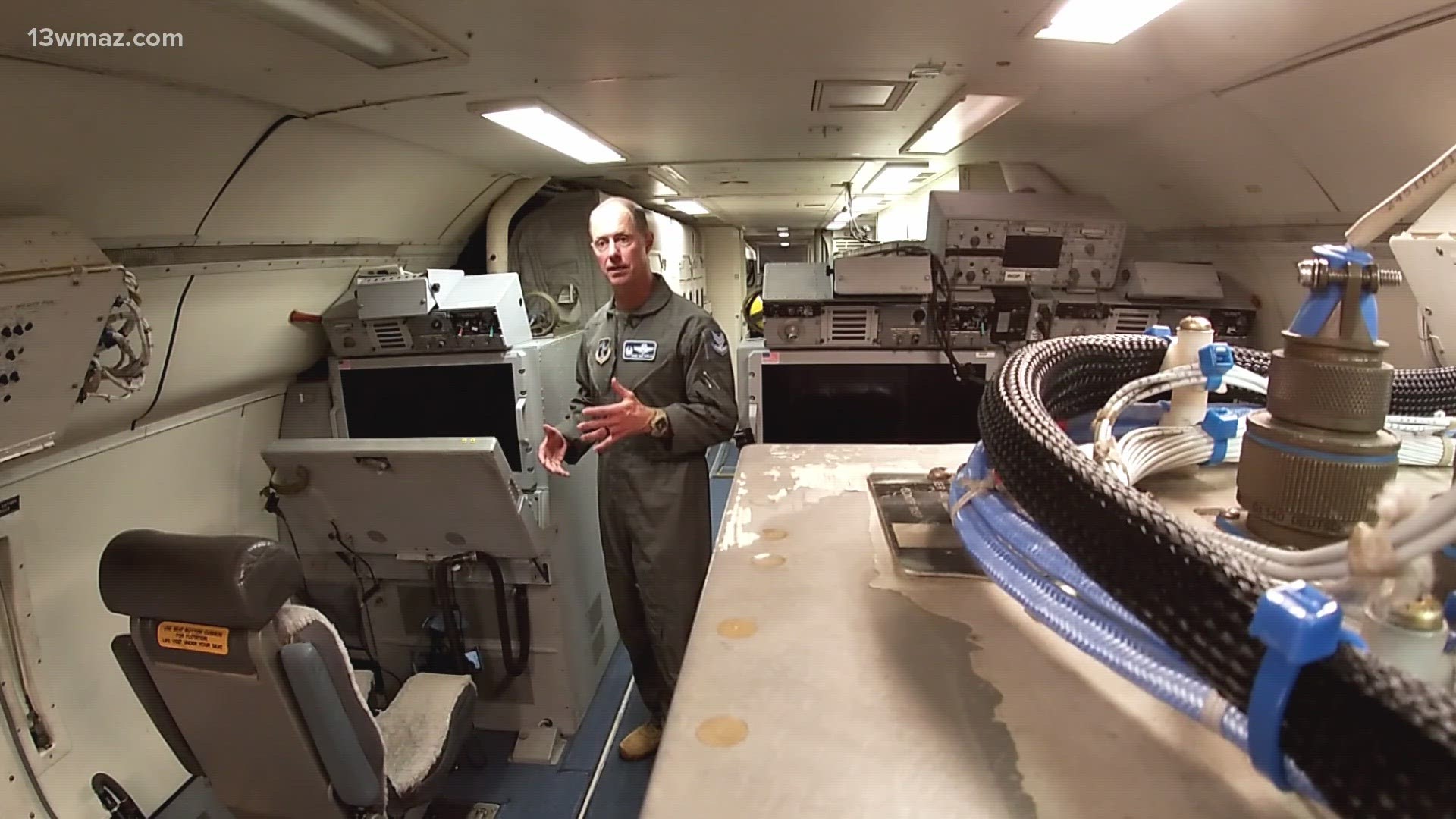ROBINS AIR FORCE BASE, Ga. — There are now no more JSTARS jets left at Robins Air Force Base.
Over its lifetime, the STARS provided immeasurable support to the country's military troops, not with bombs or missiles, but through surveillance and reconnaissance missions.
Their work has been described as a 911 center in the sky. It is all highly classified work, and because of that, 13WMAZ has rarely gotten a chance to look inside the plane until now.
Colonel Chris Dunlap, Commander of the 116th Air Control Wing at Robins, gave us a look at what JSTARS did and how they did it.
"The plane has four engines. The reason for that is the amount of electrical power it takes to run the systems in the back," says Col. Dunlap.
During missions, you'll find him flying the plane in the Aircraft Commander's seat.
"Making sure that we're safely able to get from point A to point B," he says. "You have to maintain awareness of all the communications that are going on and off the airplane, and there's a lot."
There are at least 21 people on board for each mission. The plane can be refueled in the air, so missions could sometimes last several hours. Col. Dunlap says his longest mission lasted 19 hours. During longer missions, they will carry extra crew members on board to switch off duties.
The navigator serves almost as a middle-man between the cockpit and the rest of the plane.
"Using the information and technology on board this aircraft," says Col. Dunlap.
Not far away, you'll find technicians and intelligence specialists.
"Taking the intelligence information provided to the aircraft and the intelligence information we can provide ourselves, analyzing that information, making sure that other members of our ops team and our mission crew has that information."
In the next section, you'll find the Air Battle Managers.
"This team is really the heart and soul of the mission crew."
They take information from both on the plane and off and help leaders make real-time decisions for their missions. Col. Dunlap says, at times, this section is pretty quiet.
"Because we might just be looking at stuff and analyzing stuff. On other missions, it may be more robust in command and control to where we're really talking a lot about information and who it needs to go to."
At times, other agencies or foreign militaries would send a liaison to sit in the back of the plane, too.
"It allows us to be way more effective and efficient at our mission," says Col. Dunlap.
It takes a big team effort on board, but the JSTARS played a crucial role for our troops and missions on the ground.
Out of the original fleet of 16 JSTARS jets, there is only one available for people to see. It sits outside the Museum of Aviation. Most of the other jets ended up in a military base in Arizona in a place referred to as the 'boneyard.'
Other jets were taken apart and will be used to train other units throughout the country. The Museum of Aviation plans to ensure the jet looks just as it did when it was in service.

